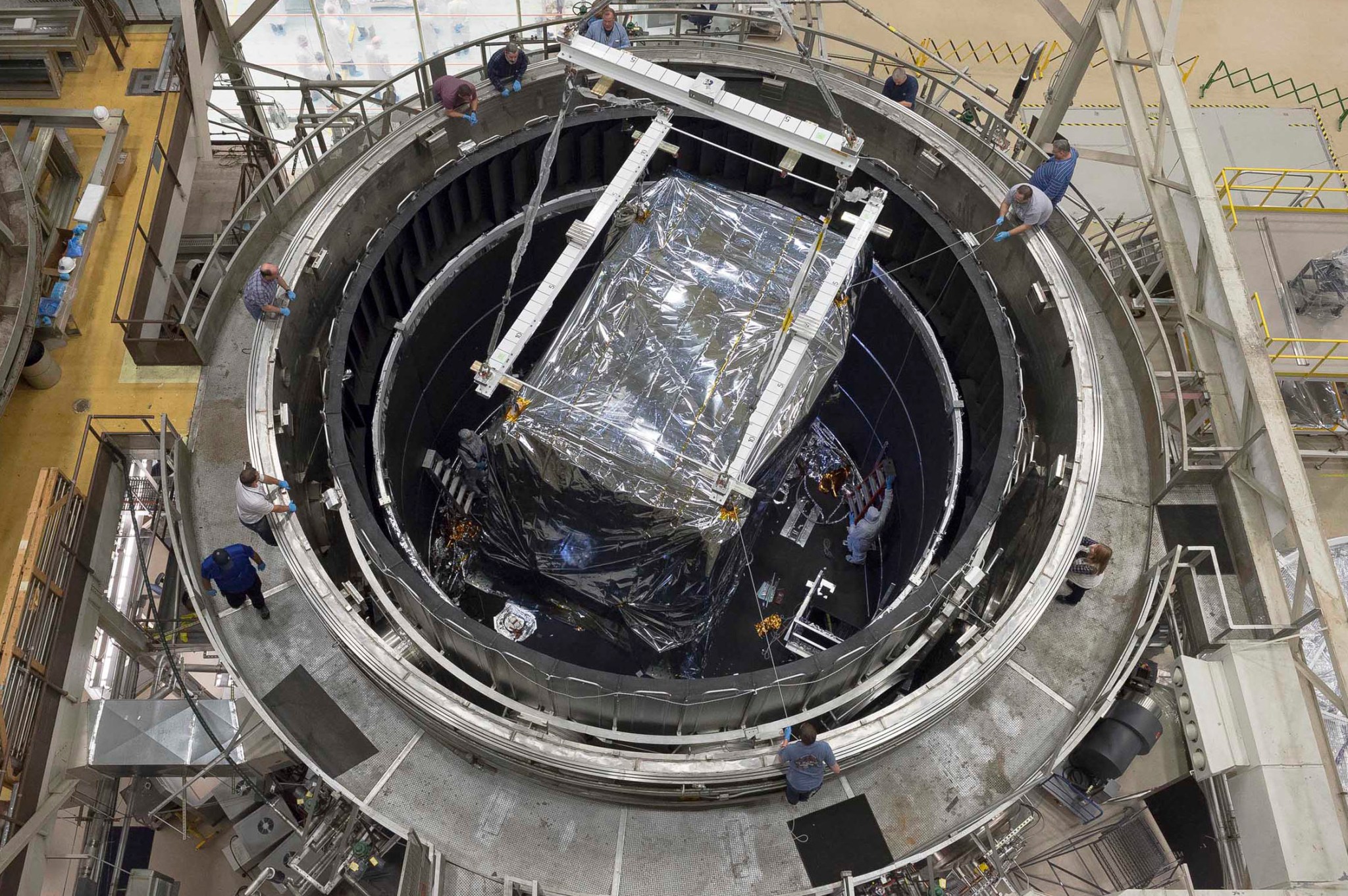A new video from NASA shows the James Webb Space Telescope’s cameras and spectrographs being lifted out of the Space Environment Simulator at NASA’s Goddard Space Flight Center in Greenbelt, Maryland. These vital parts of the telescope endured their last super-cold test here.
The Integrated Science Instrument Module, or ISIM, holds all of the Webb telescope’s cameras and spectrographs. The module is wrapped in special blanketing to keep everything spotlessly clean.
For months, these components were tested inside the Space Environment Simulator. This simulator is a cylindrical chamber 40 feet tall and 27 feet wide. Vacuum pumps eliminate the air within; and liquid nitrogen and even colder gaseous helium drop the temperature to simulate the conditions in space where the Webb telescope will orbit. The testing is critical because these instruments must operate at incredibly cold temperatures around minus 387 F, or 40 kelvins. This is 260 F colder than any temperature ever recorded on Earth’s surface.
After the test the components were moved inside Goddard’s massive clean room. The instruments will next be integrated onto the observatory to join the telescope’s mirrors.
The science instrument modules tested consist of the mid-infrared instrument (MIRI), jointly developed by a nationally funded European Consortium under the auspices of ESA (the European Space Agency) and NASA’s Jet Propulsion Laboratory in Pasadena, California; a near infrared spectrometer (NIRSpec), jointly developed by Airbus for ESA and the U.S.; the Fine Guidance Sensor and Near-InfraRed Imager and Slitless Spectrograph, provided by the Canadian Space Agency and developed by COM DEV International, Cambridge, Ontario, Canada; and Near Infrared Camera (NIRCam), built by a team at the University of Arizona and Lockheed Martin’s Advanced Technology Center.
Credits: NASA’s Goddard Space Flight Center/M. McClare
The James Webb Space Telescope is the scientific successor to NASA’s Hubble Space Telescope. It will be the most powerful space telescope ever built. Webb will study many phases in the history of our universe, including the formation of solar systems capable of supporting life on planets similar to Earth, as well as the evolution of our own solar system. It’s targeted to launch from French Guiana aboard an Ariane 5 rocket in 2018. Webb is an international project led by NASA with its partners, ESA and the Canadian Space Agency.
Related Links
- More information about what’s coming up for the Webb until launch
- Download the video from NASA Goddard’s Scientific Visualization Studio
- NASA’s Webb telescope website
- Webb telescope project site
Laura Betz
NASA’s Goddard Space Flight Center, Greenbelt, Md.


























